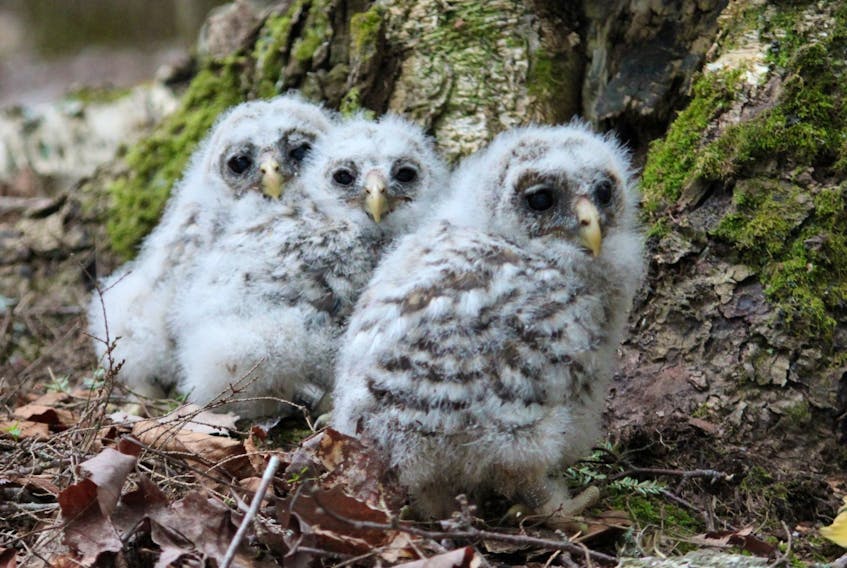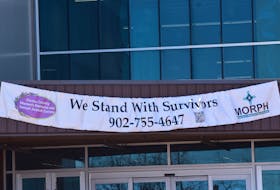Leisa McNeil didn’t expect to spend her day rescuing baby owls.
On May 18, the Highbury woman sent her 11-year-old daughter Darcy McNeil, a student at New Minas Elementary School, and seven-year-old grandson Owen Milligan, a student at Gaspereau Elementary School, out for an adventure.
“I told Darcy and Owen to go have an adventure and make it a good long one. It was a ‘get out of the house, it’s a nice day,’ 1970s kind of message.”
Fifteen minutes later, the children were back, excitedly reporting that they had found two baby owls on the ground in nearby woods, with the mother hovering anxiously overhead.
The family had just finished reading Owls in the Family by Farley Mowat the week before, and Darcy had done a book report presentation to her teacher, Mme. Carrie Surette’s Grade 5 class, the previous day.
"I wasn’t convinced, but after some assurance that they were white fluffy babies on the ground that they thought were owlets, I joined them in the adventure, but not before contacting Bernard Forsythe and his friend Pauline Meldrum. I know him because he was my postal carrier for more than 30 years,” said McNeil.
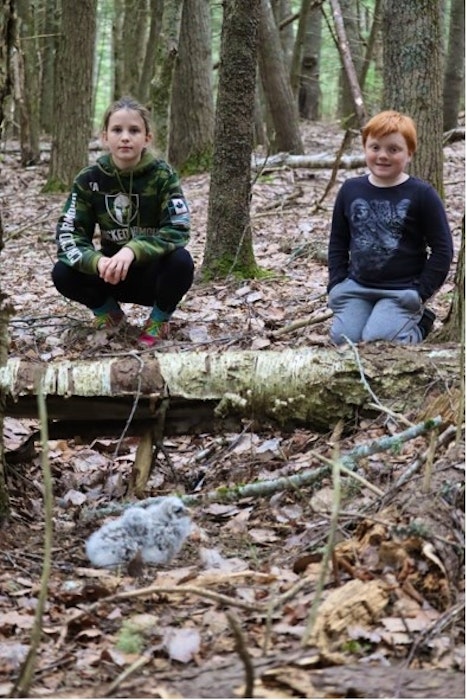
Forsythe, now retired as a mail carrier and a renowned Nova Scotian bird aficionado, has a permit to band baby owls. The group hiked out with an extension ladder and found three owlets, two on the ground and one still in the nest.
“We found two baby birds on the ground just below a yellow birch tree. About 20 feet up was where an old branch had broken off many years before. The barred owl is a cavity nester and had built a nest there,” explained Forsythe.
“Two of the babies had tumbled down to the ground and I could see the third one up there.”
Forsythe climbed to the top rung of the 16-foot ladder, with the group below holding it steady, and retrieved the third bird. He banded each owlet and then looked for material to reinforce the nest.
“In this particular nest, the edge of the outside wall was rotten bark. I knew we had to get the nest fixed up so they wouldn’t fall out again," said Forsythe.
"Two of the youngsters knew where there were some old, short boards down in the woods. I nailed two old boards to the tree to make a new side for the nest."
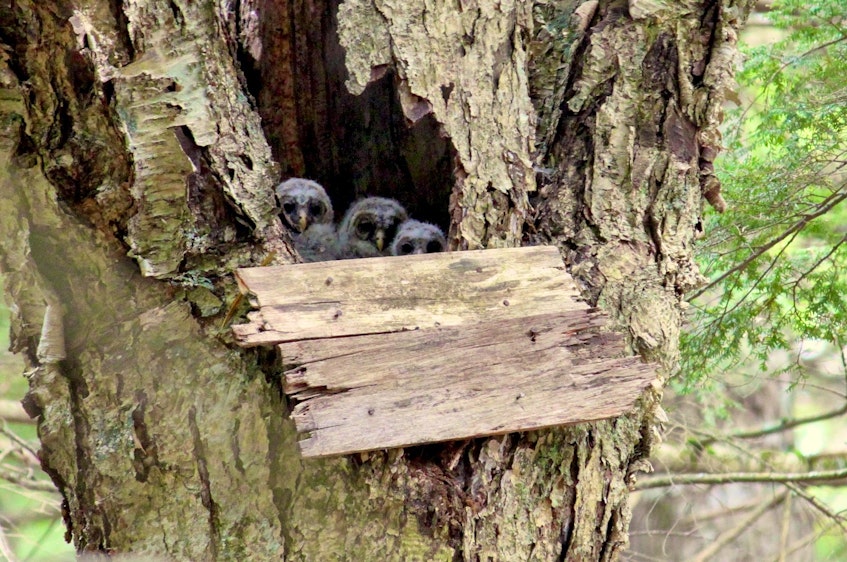
While the group was there, the mother owl hovered loudly, and the father owl came home with a mouse in his mouth for dinner. He subsequently ate the mouse, which he would later regurgitate to feed the babies, according to Forsythe.
Barred owls don’t build their nests, but are cavity nesters that create nests in hollowed trees in old-growth woods. In areas where Nova Scotia has lost much of its old-growth forest, the owls make homes in secondary growth woods where food sources, including small mammals like shrews, deer mice and moles, are plentiful, but nesting cavities are scarce.
Forsythe has been installing nest boxes for more than 40 years and has banded over 800 owlets in that time.
Barred owls usually produce two to three offspring each year, depending on the food supply.
“The female is dependent on the male, and if he can't provide enough food, she just won't lay eggs. That's what happened to quite a few of my boxes this year. But I did manage to band 15 babies this year,” said Forsythe.
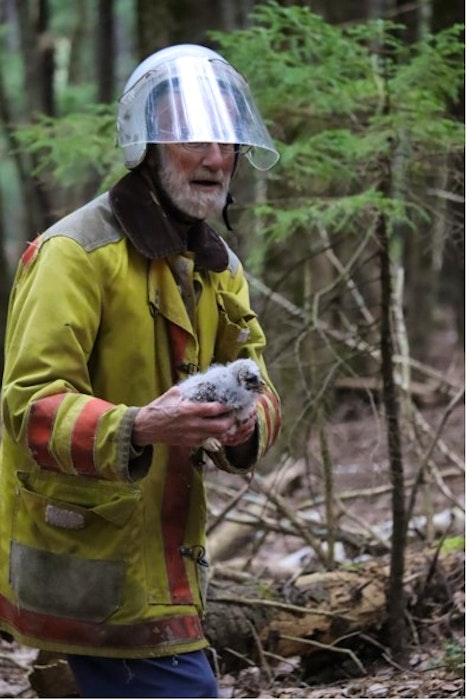
The owls are non-migratory and adults that have established a territory will remain there throughout their lifespan of 20 or more years.
“The first year of life is the toughest. That’s when we lose most of the owlets,” said Forsythe.
“When I started banding owls in the 1970s, the barred owl wasn’t that common in Kings County. Now, they’re our most common. They will use an old crow or hawk nest but their chance for success is a lot greater with a cavity nest."
After rebuilding the nest, Forsythe again climbed the ladder to put the owlets back in their home.
“As we left, we could see their three heads peeking over the new boards.”
He recently checked on the babies and found them to be thriving and “really growing” in the repaired nest.
Forsythe encourages Nova Scotians to put up nest boxes for barred owls on their property in wooded areas.
“This is a species that if you build them a house, they will take advantage of it.”

